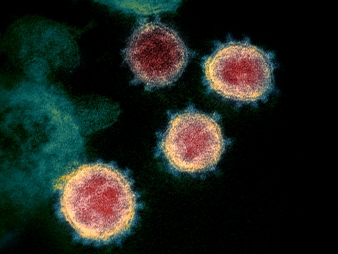An employee has just informed you that he has tested positive for COVID-19, or is displaying COVID-19 symptoms, such as fever, cough or shortness of breath. What should you, as the employer, do now to protect other employees and continue business? According to the Centers for Disease Control (CDC), the following are the steps you should take.
First, if the sick employee is not currently at work, the employer should tell the employee not to come to work, and the employee should home isolate per the guidelines below. It is critical for sick employees to notify their employer and stay home, and employers should stress this to employees. Employees who have a sick family member at home with COVID-19 should notify their employer and consider staying home as well.
If the sick employee is already at work, the employer should tell him or her to cease work and go home immediately. This is a critical step that must be taken to minimize any health and safety risks to other employees and customers. An individual who has been diagnosed with COVID-19 or who has symptoms of COVID-19 should not come to work when they are sick.
After the employer is notified of the infected employee’s COVID-19 diagnosis or symptoms and has directed the employee to stay home, the sick employee should home isolate. According to the CDC, people with COVID-19 or suspected COVID-19 who have home isolated can stop home isolation (and return to work) under the following conditions:
- If the infected employee will not have a test to determine if he is still contagious, he can leave home after these three things have happened:
- He has had no fever for at least 72 hours (that is three full days of no fever without the use of medicine that reduces fevers)
AND - other symptoms have improved (for example, when his cough or shortness of breath have improved)
AND - at least 7 days have passed since his symptoms first appeared.
- He has had no fever for at least 72 hours (that is three full days of no fever without the use of medicine that reduces fevers)
- If the infected employee will be tested to determine if he is still contagious, he can leave home after these three things have happened:
- He no longer has a fever (without the use of medicine that reduces fevers)
AND - other symptoms have improved (for example, when his cough or shortness of breath have improved)
AND - he received two negative tests in a row, 24 hours apart.
- He no longer has a fever (without the use of medicine that reduces fevers)
Next, the CDC recommends contacting the local health department for guidance. The health department can help guide the employer to ensure it is responding appropriately. Also, it is prudent for employers to have a business contingency plan in place to promptly and competently respond to this type of situation in order to protect employees and continue business.
Then, the CDC urges employers to inform their employees of possible exposure to COVID-19. It is especially critical to notify every employee that the infected employee had close contact with. The CDC considers those in “close contact” to mean anyone who was within six feet of the infected individual (or an individual with a suspected case of COVID-19) for an extended period of time (more than 20 minutes) within 48 hours prior to the infected individual showing symptoms. This could include vendors and customers, too. The employer can also request that the infected employee make a list of people that he or she knows they had close contact with. Any employees who were in close contact with the infected employee during the period from 48 hours before the onset of symptoms until the infected employee has completed home isolation, should consult a health care provider and stay home to self-quarantine while continuously self-monitoring for symptoms (i.e., fever, cough, or shortness of breath) for at least the next 14 days after their last exposure to the infected employee.
It is very important that the employer maintain the confidentiality of the sick employee’s identity and also be careful not to disclose facts or details that could potentially identify the individual. Any unauthorized disclosure of the individual’s name or identifying information is a violation of the Americans with Disabilities Act. The employer must, however, give enough facts to put other employees on notice that an employee has tested positive for COVID-19 or has a suspected case of COVID-19.
Additionally, an employer should consider whether to inform all employees, even those at a different work location or those that were not in close contact with the infected employee, that an employee has shown symptoms of or tested positive for COVID-19. The employer should consider the interests of transparency and the wellbeing of employees versus preventing the spread of rumors and potentially causing panic among employees. An employer should also take steps to notify building management if it shares an office building, space, or area with another business or other tenants.
The following list from the CDC provides some immediate steps an employer can take to minimize the spread of COVID-19 and continuously protect other employees.
- Close off areas used by the ill persons.
- Wait as long as practical before beginning cleaning and disinfection to minimize the potential for exposure to respiratory droplets. If possible, wait up to 24 hours before beginning cleaning and disinfection.
- Open outside doors and windows to increase air circulation in the area.
- Cleaning staff should clean and disinfect all areas (e.g., offices, bathrooms, and common areas) used by the ill persons, focusing especially on frequently touched surfaces.
- Follow the CDC guidelines on how to clean and disinfect different types of surfaces, which can be found here.
Continue routine disinfection and cleaning of all workspaces.
Please do not hesitate to contact us should you have any questions in regard to the content of this client alert.
Tagged In:CoronavirusCOVID-19




